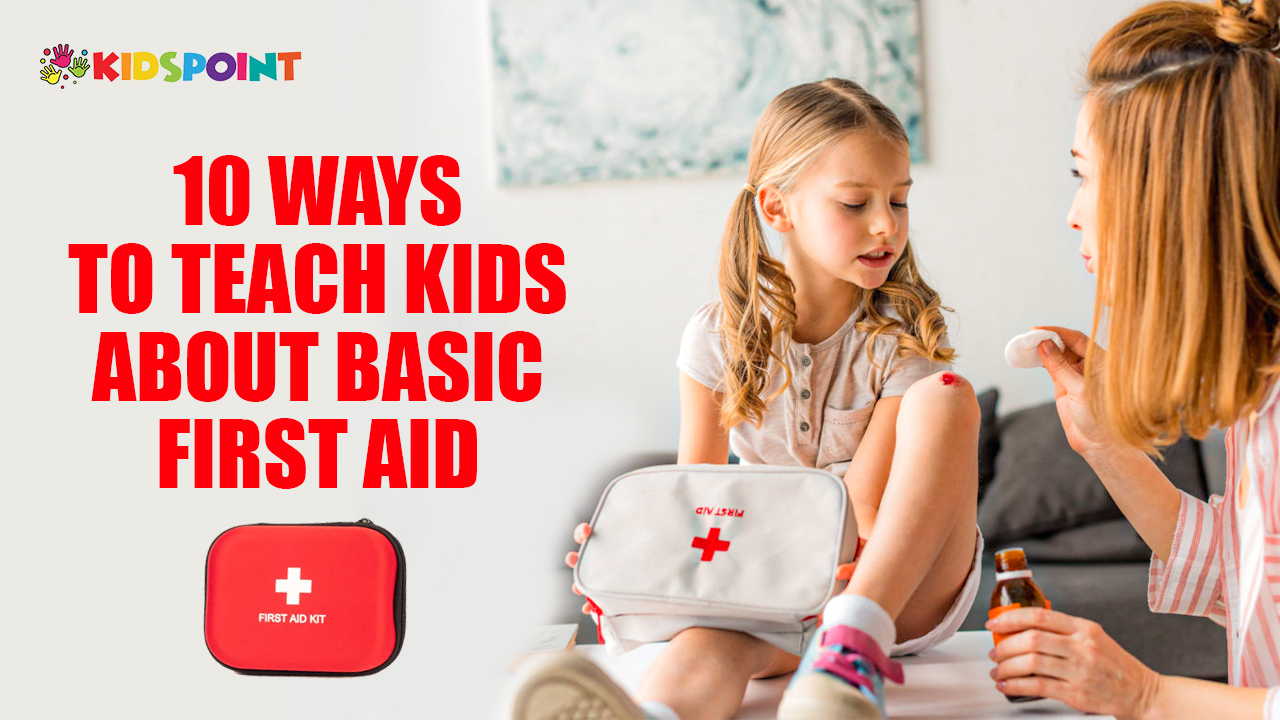Accidents and minor injuries are an inevitable part of growing up. Whether it’s a scraped knee from a playful tumble or a minor burn from a kitchen mishap, equipping kids with basic first aid knowledge can make a world of difference in their ability to handle these situations calmly and effectively. At The Kids Point, we believe in empowering young minds with the tools they need to stay safe and confident. That’s why we’ve compiled a comprehensive guide on 10 engaging and effective ways to teach kids about basic first aid.
1. Start Early and Make it Fun
Instilling first aid knowledge in kids doesn’t have to be a daunting task. Start introducing basic concepts early on, even before they reach school age. Incorporate first aid lessons into playtime, using stuffed animals or dolls as patients. Engage them with interactive games and role-playing scenarios, making learning an enjoyable experience.
2. Use Visual Aids and Demonstrations
Kids are visual learners, so make use of pictures, diagrams, and videos to explain first aid procedures. Show them how to apply bandages, clean wounds, and check for signs of injury. Use props and demonstrations to make the learning process more engaging and memorable.
3. Personalize the Learning Experience
Connect first aid lessons to their everyday experiences. Talk about common injuries they might encounter at home, school, or the playground. Discuss how first aid can help them and others in these situations. Personalize the learning experience to make it more relevant and relatable.
4. Emphasize Safety and Prevention
Before delving into specific first aid techniques, emphasize safety measures to prevent injuries in the first place. Teach them about fire safety, household hazards, and safe play practices. Help them develop an awareness of their surroundings and potential risks.
5. Encourage Practice and Repetition
Regular practice is crucial for retaining first aid knowledge. Encourage kids to practice applying bandages, checking for signs of injury, and calling for help in simulated scenarios. Repetition reinforces understanding and builds confidence in their ability to respond in emergency situations.
6. Make it a Family Affair
Involve the whole family in learning first aid. Organize family first aid nights, where everyone can learn and practice together. Encourage older siblings to teach younger ones, fostering a sense of responsibility and shared knowledge.
7. Utilize Online Resources and Apps
Take advantage of the wealth of online resources and apps designed to teach kids about first aid. Interactive games, videos, and quizzes can make learning fun and engaging. Encourage them to explore these resources under your supervision.
8. Enroll in Formal First Aid Training
Consider enrolling kids in formal first aid training classes once they’re old enough. These classes provide a more comprehensive and structured approach to first aid education, preparing them for real-world situations.
9. Make First Aid a Part of Everyday Routines
Incorporate first aid into everyday routines. Remind kids to check the first aid kit regularly and ensure it’s well-stocked. Encourage them to share their knowledge with friends and classmates, promoting a culture of safety and preparedness.
10. Celebrate Their Achievements
Recognize and celebrate kids’ accomplishments in learning first aid. Encourage them to share their knowledge with others, and praise their efforts to stay safe and help others. Positive reinforcement boosts confidence and encourages continued learning.
Empowering Young Minds
At The Kids Point, we are committed to providing children with the tools and knowledge they need to navigate the world with confidence and safety. Our comprehensive first aid education programs are designed to empower young minds with the skills they need to respond effectively to minor injuries and emergencies. We believe that every child deserves the knowledge and confidence to make a difference in their own safety and the well-being of others. Join us in empowering the next generation with the essential skills of first aid.


